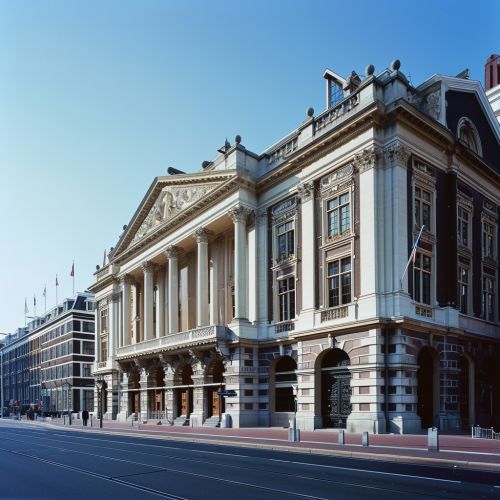Royal Concertgebouw
History
The Royal Concertgebouw is a concert hall in Amsterdam, the Netherlands. The Dutch term "concertgebouw" literally translates to "concert building". Its name is often anglicized as "Concertgebouw". The Royal Concertgebouw is considered one of the finest concert halls in the world, renowned for its exceptional acoustics and historic significance.


The Concertgebouw was officially opened on April 11, 1888, after a construction period of nearly three years. The building was designed by the Dutch architect Dolf van Gendt, who was inspired by the Gewandhaus in Leipzig, Germany. The Concertgebouw was initially criticized for its location, as it was built on the outskirts of Amsterdam, on land that was then barely developed. However, the city eventually grew around it, making it a central landmark.
In 1928, on the occasion of its 40th anniversary, the Concertgebouw was granted the "Royal" prefix by Queen Wilhelmina of the Netherlands. Since then, it has been officially known as the Royal Concertgebouw.
Architecture
The Royal Concertgebouw is a prime example of the Neo-Renaissance style, which was popular in Europe during the 19th century. The building's exterior is characterized by its red brick facade, ornate detailing, and a large dome that crowns the structure. The interior design is equally impressive, with its richly decorated ceilings, marble columns, and intricate woodwork.
The Royal Concertgebouw consists of two main concert halls: the Grote Zaal (Great Hall) and the Kleine Zaal (Small Hall). The Great Hall, known for its superior acoustics, can accommodate over 2000 spectators, while the Small Hall, which is used for chamber music performances, has a capacity of 437.
Acoustics
The Royal Concertgebouw is renowned for its exceptional acoustics. The design of the Great Hall, in particular, contributes significantly to the hall's acoustic quality. The hall is in the shape of a "shoebox", a design common to many of the world's best concert halls. This shape helps to distribute sound evenly throughout the hall, ensuring that every member of the audience experiences the same quality of sound.
The materials used in the construction of the hall also play a crucial role in its acoustics. The wooden flooring and the plaster walls help to absorb low-frequency sounds and reflect high-frequency sounds, creating a balanced and clear sound.
Performances
The Royal Concertgebouw is home to the Royal Concertgebouw Orchestra, one of the world's leading orchestras. The orchestra was established at the same time as the concert hall and has since gained an international reputation for its interpretations of classical music.
In addition to the Royal Concertgebouw Orchestra, the hall hosts performances by other leading international orchestras, ensembles, and soloists. The Royal Concertgebouw's programming is diverse, featuring not only classical music but also jazz, world music, and pop concerts.
